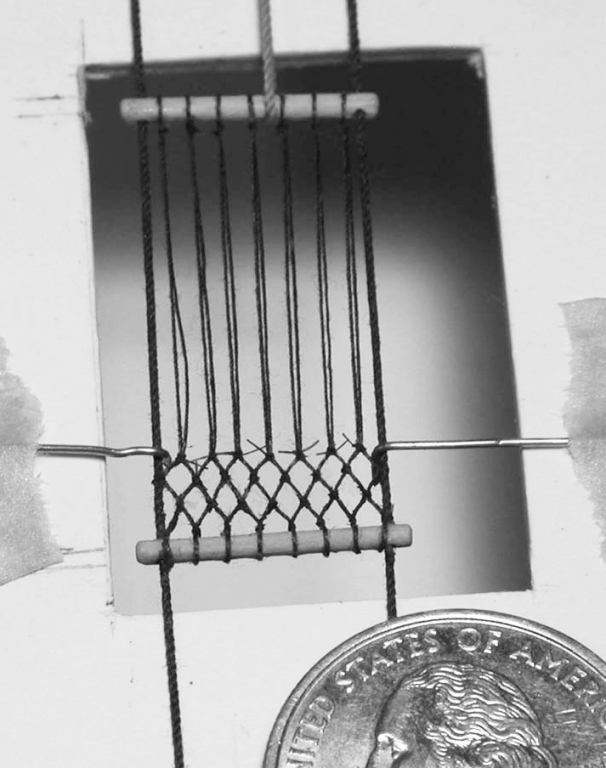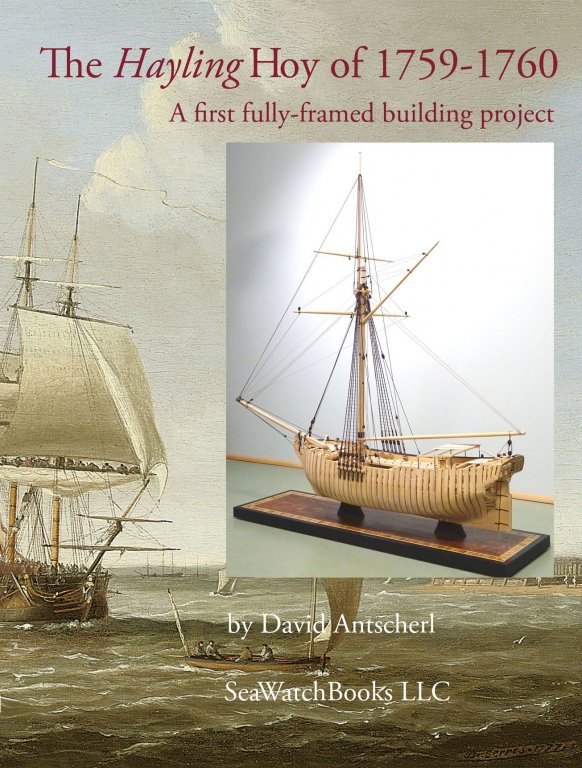-
Posts
13,301 -
Joined
-
Last visited
Content Type
Profiles
Forums
Gallery
Events
Everything posted by druxey
-

HMS VICTORY 1759 by isalbert
druxey replied to isalbert's topic in - Build logs for subjects built 1751 - 1800
Incroyable! Very nicely done, isalbert. -
Thanks for my smile today! There is a saying, "Many hands make light work", but in this case it is more like "Many hands make dark work"!
-
The complexity of rigging your model is mind-boggling, Ed. It is being beautifully executed.
- 3,618 replies
-
- young america
- clipper
-
(and 1 more)
Tagged with:
-

Sunbeki by palandoken - FINISHED - 1/60
druxey replied to palandoken's topic in - Build logs for subjects built 1751 - 1800
Even if Google Translate is poor, the model is lovely. Well done, Adam! Google Translate zayıf olsa bile, model güzeldir. Aferin, Adam! -
As a professor of mine years ago observed, "If it works, it works." I hope your health is back now, John, and we'll see further progress on Meteor in May.
-
Spariate's lines can be seen (as re-fitted by the British) at: http://collections.rmg.co.uk/collections/objects/80515.html
-
SJSoane (Mark) is absolutely 'right on' with his observations and advice.
-
Practice with a well-sharpened edge. Miniature joints should not need a mallet! If your chisel is sharp enough, it should make a crisp apple-cutting sound. I use my thumbnail to incrementally cut back to the joint line. Line the chisel up against the wood edge, place your nail against the back of the blade. Move your thumbnail back a thou or two, lift the chisel until the back touches your nail again and cut. This gives a high level of control. After some practice you can sense when the chisel is truly vertical.
-
If you can afford them, go with Veritas. Vintage chisels may have been misused in many various ways and you simply don't know their history. You may do well on eBay, but.... Regardless of source, proper sharpening is the essential thing.
-
A thin coat of gesso first will seal the surface so that the paint coats aren't absorbed. (Regular household acrylic primer will do!)
-
That is Continental Danish practice, Michael. Different countries had different building styles, so that although there are similarities, some details would not apply to British ships.
-
Brush painting is not necessarily bad. Think of old-time coachpainters and the 'coachpainter's finish'. This was achieved with time and patience. A coat of paint, Dry for a minimum of 24 hours, rub down, repeat. It could take 10 coats or more, the last few being rubbed down with pumice powder, then finally with rottenstone. Been there, done it, on a harpsichord case. The results can be amazing if you take sufficient time and care. Or, you could just take the hull to your local autobody shop....
-
Glad you have the courage to revise this, Doris. Dobri!
- 1,035 replies
-
- royal katherine
- ship of the line
-
(and 1 more)
Tagged with:
-

Pandora by marsalv - FINISHED - 1:52
druxey replied to marsalv's topic in - Build logs for subjects built 1751 - 1800
A small but irritating point: I made the same error on a model some years ago. The netting for stowing the sail is incomplete. The illustration we referred to only shows the first stage of creating the netting, the zig-zag part. A more experienced modeler pointed this out to me. The second stage is to tie alternating pairs of those longitudinal threads together (I used fine fly-tying line) to form diamond-shaped netting. It was fiddly and tedious work, best done on a jig off-model. But perhaps you didn't want to know this! However, you are doing such a lovely job on your rigging I thought I'd mention it. -

HMCSS Victoria 1855 by BANYAN - 1:72
druxey replied to BANYAN's topic in - Build logs for subjects built 1851 - 1900
How come I missed this until now? You are doing a lovely job on her, Pat. I'll enjoy continuing to follow your progress.- 1,005 replies
-
- gun dispatch vessel
- victoria
-
(and 2 more)
Tagged with:
-
The illustration form Falconer you posted is correct. The rails are over the planking. Steel (1805) stated that the rails were raised (cut directly) from plank in merchant ships, but not on naval ones.
-
You obviously have had much too much fun, Dan. Now, back to Michaelangelo! Seriously, the populated model looks great. Well done.
- 287 replies
-
- michelangelo
- ocean liner
-
(and 1 more)
Tagged with:
-
I do not know why for certain, but imagine that a naval ship could more easily be repaired if the rails were not part of the planking. Merchant ships were not usually involved in fleet actions! The model photos show the rail directly on the frame only because the model-maker wanted to show it while leaving off planking to show the frames as well. I hope this clears up any confusion.
-
UPDATE: The Hayling book is on its way now. Here is a sneak preview of the cover: For anyone interested, the original model featured here is still for sale. It has now been professionally appraised and the asking price adjusted accordingly. Terms are available. If seriously interested please PM me for further details.
-
A poor excuse for neglecting Michaelangelo, Dan! Seriously, that is from the sublime to the ridiculous in terms of size and scale. At least you didn't have to clean off a 1/16" layer of sticky barn deposits as I just did from a model - a real hazmat situation! You have an interesting mix of sophisticated and primitive work on the Z. Pike model. Was it all made by the same hand?
- 287 replies
-
- michelangelo
- ocean liner
-
(and 1 more)
Tagged with:
About us
Modelshipworld - Advancing Ship Modeling through Research
SSL Secured
Your security is important for us so this Website is SSL-Secured
NRG Mailing Address
Nautical Research Guild
237 South Lincoln Street
Westmont IL, 60559-1917
Model Ship World ® and the MSW logo are Registered Trademarks, and belong to the Nautical Research Guild (United States Patent and Trademark Office: No. 6,929,264 & No. 6,929,274, registered Dec. 20, 2022)
Helpful Links
About the NRG
If you enjoy building ship models that are historically accurate as well as beautiful, then The Nautical Research Guild (NRG) is just right for you.
The Guild is a non-profit educational organization whose mission is to “Advance Ship Modeling Through Research”. We provide support to our members in their efforts to raise the quality of their model ships.
The Nautical Research Guild has published our world-renowned quarterly magazine, The Nautical Research Journal, since 1955. The pages of the Journal are full of articles by accomplished ship modelers who show you how they create those exquisite details on their models, and by maritime historians who show you the correct details to build. The Journal is available in both print and digital editions. Go to the NRG web site (www.thenrg.org) to download a complimentary digital copy of the Journal. The NRG also publishes plan sets, books and compilations of back issues of the Journal and the former Ships in Scale and Model Ship Builder magazines.




